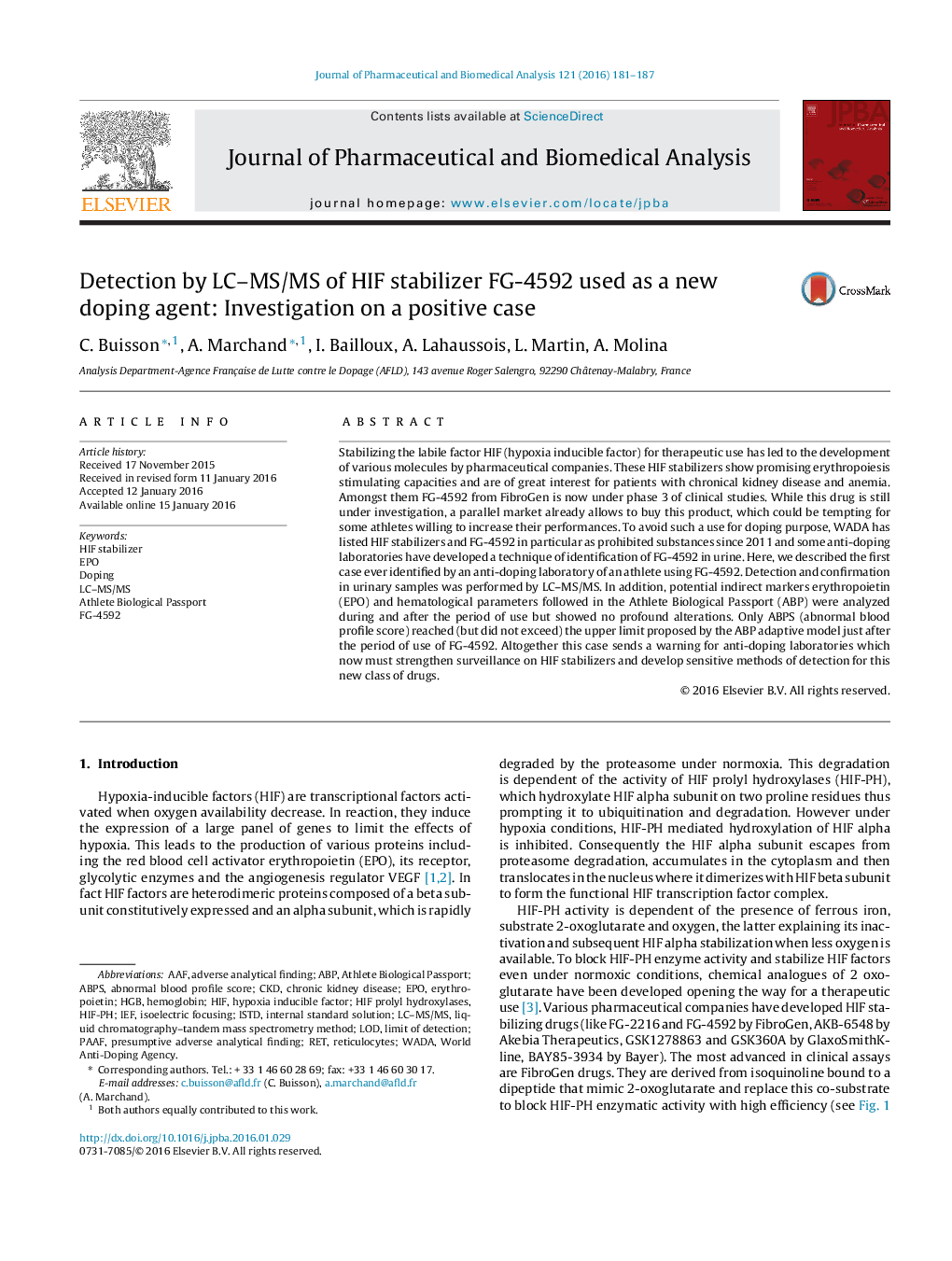| Article ID | Journal | Published Year | Pages | File Type |
|---|---|---|---|---|
| 1220957 | Journal of Pharmaceutical and Biomedical Analysis | 2016 | 7 Pages |
•Identification of the first case ever of doping with FG-4592.•High performances of LC–MS/MS detection technique for FG-4592.•Absence of detection by EPO analyzing techniques.•No obvious impact on hematological parameters.
Stabilizing the labile factor HIF (hypoxia inducible factor) for therapeutic use has led to the development of various molecules by pharmaceutical companies. These HIF stabilizers show promising erythropoiesis stimulating capacities and are of great interest for patients with chronical kidney disease and anemia. Amongst them FG-4592 from FibroGen is now under phase 3 of clinical studies. While this drug is still under investigation, a parallel market already allows to buy this product, which could be tempting for some athletes willing to increase their performances. To avoid such a use for doping purpose, WADA has listed HIF stabilizers and FG-4592 in particular as prohibited substances since 2011 and some anti-doping laboratories have developed a technique of identification of FG-4592 in urine. Here, we described the first case ever identified by an anti-doping laboratory of an athlete using FG-4592. Detection and confirmation in urinary samples was performed by LC–MS/MS. In addition, potential indirect markers erythropoietin (EPO) and hematological parameters followed in the Athlete Biological Passport (ABP) were analyzed during and after the period of use but showed no profound alterations. Only ABPS (abnormal blood profile score) reached (but did not exceed) the upper limit proposed by the ABP adaptive model just after the period of use of FG-4592. Altogether this case sends a warning for anti-doping laboratories which now must strengthen surveillance on HIF stabilizers and develop sensitive methods of detection for this new class of drugs.
Graphical abstractFigure optionsDownload full-size imageDownload as PowerPoint slide
